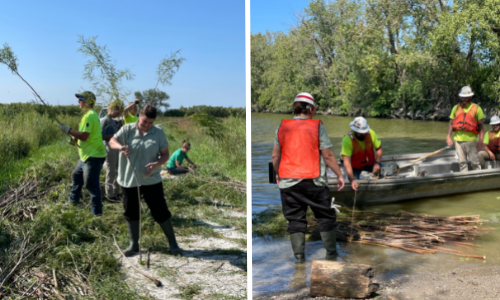
We’re proud to share that last year was a busy one for management action projects (MAPs), with lots of progress to report. Out of 80 total MAPs, 56 (70%) have funding fully allocated, with a further 7 (9%) partially funded. By the end of 2021, 24 projects (30%) were completed, the plurality of which were Wildlife MAPs. Many more projects have a projected completion in 2022-2023. Let’s dig into some details to celebrate what we’ve accomplished, and what we have to look forward to in 2022.
Wildlife MAP Updates (BUI 14b)
All 20 Wildlife MAPs are funded. As of the end of 2021, 11 projects are completed, totaling 716 acres. These include restoration work at Hight Wetland, Hight Prairie, and Toussaint State Wildlife Area. 9 more projects are projected to be completed in 2022-2023.
Aquatic MAP Updates (BUI 3a, 6, 14a)
Of 51 Aquatic MAPs, 32 are funded, 2 are partially funded, and 17 still need funding. Several projects achieved full funding in September 2021, and are getting underway now. 9 projects were completed as of the end of 2021.
Sediment MAP Updates (BUI 3, 6, 14)
Out of 8 Sediment MAP areas, 3 next steps are fully funded and 5 are partially funded. The remedial and habitat portion of the Otter Creek Great Lakes Legacy Act project was completed in Fall 2021, which began with the removal of 50,400 cubic yards of contaminated sediment across 1.7 miles. From there, partners undertook habitat restoration involving the creation of six bendway weirs and six locked brush-piles, as well as planting 1200 willow stakes. Several other sediment projects are in various stages of sampling, reporting, and monitoring.
Looking Ahead
In 2022 the MAAC expects to propose the removal of BUI 1a and 1b “Restrictions on Fish and Wildlife Consumption” and BUI 11 “Degradation of Aesthetics.” Years of effort by many partners have gone into completing the management actions associated with these BUIs.
More detailed MAP updates, plus information on Ohio AOC program project funding and prioritization can be found on our website, through a presentation created by Cherie Blair of Ohio EPA. Look for the presentation as a PDF linked in the “Resources” section.
